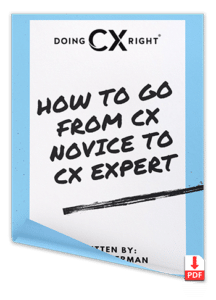Article originally published on CMS Wire
Businesses should take care of all of their customers, it’s true. But not all customers are created equal, which is why businesses should take extra care with high-value clients. If the people who provide your company with more revenue don’t receive a higher level of customer experience (CX) in return, they’ll likely go to a competitor that they feel better recognizes their value.
Below are some ways to show your high-value customer’s extra appreciation.
Do You Know Who Your High-Value Customers Are?
First things first: does your company know who its high-value customers are? “By segmenting existing and prospective customers across multiple dimensions, we can analyze each cohort by their needs, decision criteria, purchase process, and value so we can begin to serve them differently,” said Janet Balis, EY Americas customer, and growth market leader, and marketing practice leader.
Some companies fail to properly segment customers, particularly if segmentation efforts are pursued in different divisions or by different functions, Balis said. For example, finance may look at revenue generation patterns, while sales may look at the likelihood to convert and overall wallet size. Different leaders have the same end consumer but cannot connect the dots because they haven’t unified their view of the customer.
Jeremy Korst, president of GBK Collective, agreed: “The most important thing a company can do to differentiate their brand perception and overall customer experience for their highest value customers is to embrace a consistent definition of who those high-value customers are across the entire organization.” Otherwise different groups will focus on what they feel provides differentiated CX.
“Once these strategic target customers are defined, then it is key to engage directly with these customers to better understand their unmet needs and desires —which of course change over time — and then build their organization and CX around these specific customers,” Korst said.
“The top 20% of a company’s customers account for 105% to 113% of a company’s net income,” said Ali Cudby, managing partner of Alignment Growth Strategies and author of “Keep Your Customers.” “The majority of customers are actually served at a loss.”
Cudby recommended creating “playbooks” to recognize and reward those high-value customers: “Playbooks deliver consistency to everyone in your organization. They contain the specific, step-by-step actions needed to cultivate long-term loyalty.”
For example, one of Cudby’s clients, a B2B subscription service, developed a playbook designed to better onboard new customers, eliminating what had been a poor experience for many. As a result, customer retention increased by 30%.
Communicate, Communicate, Communicate
Get the basics right, said Stacy Sherman, founder of Doing CX Right. One of the most basic elements of delivering the best CX to high-value customers is excellent communications.
“Customers expect information on a timely basis,” Sherman explained. “Even when there are no updates to share, great CX means picking up the phone and explaining that you have not forgotten and that you are still working on a resolution. Silence is never an option, especially for high-paying customers.”
Outside of phone calls, Sherman recommended leveraging technology to better communicate with customers, such as sending SMS text notifications with an estimated time of arrival, when applicable.
Assign Top Employees to Top Customers
Assign the best customers to the organization’s best-performing employees for servicing needs. Make it possible for those employees to do what’s right for the customer without requiring supervisor approval, Sherman added. “Starbucks is known for this as whenever a personalized drink does not satisfy a customer, the staff corrects the problem immediately without any questions asked or management approval. It’s one of the many reasons customers pay triple the cost for a cup of coffee than other shops.”
Use a Data-Driven Approach
“Customer experience cannot be designed from the inside-out, rather it must be crafted around the most frictionless path-to-purchase that the customer desires to meet their articulation of needs,” Balis said. “In a human-driven sales organization, we must focus on account-leadership assignments, account-based marketing strategies, and solution-based selling strategies and solution-based selling strategies to be sure that customers’ needs are met in a truly consultative way based on the issues they face.”
Balis added that in a B2C context, physical and digital retail must create an experience that is connected, easily navigable, and personally relevant, where appropriate. In both B2B and B2C, companies must look at the purchase not as the endpoint of the journey but instead as the beginning of a lifetime relationship to cultivate and nurture.
Data and technology are the lynchpins of pulling this all together, according to Balis. “Differentiated offers, bundles, loyalty programs, and service levels can all be deployed, but data-driven and digital approaches allow us to be far more scientific and precise in our analysis and deployment.”










